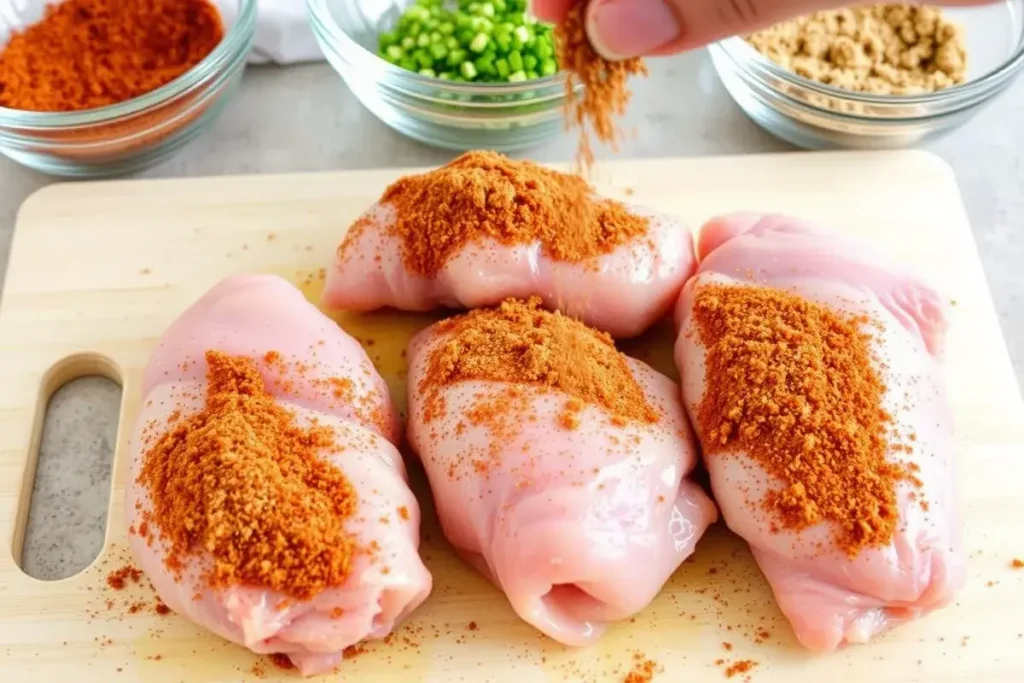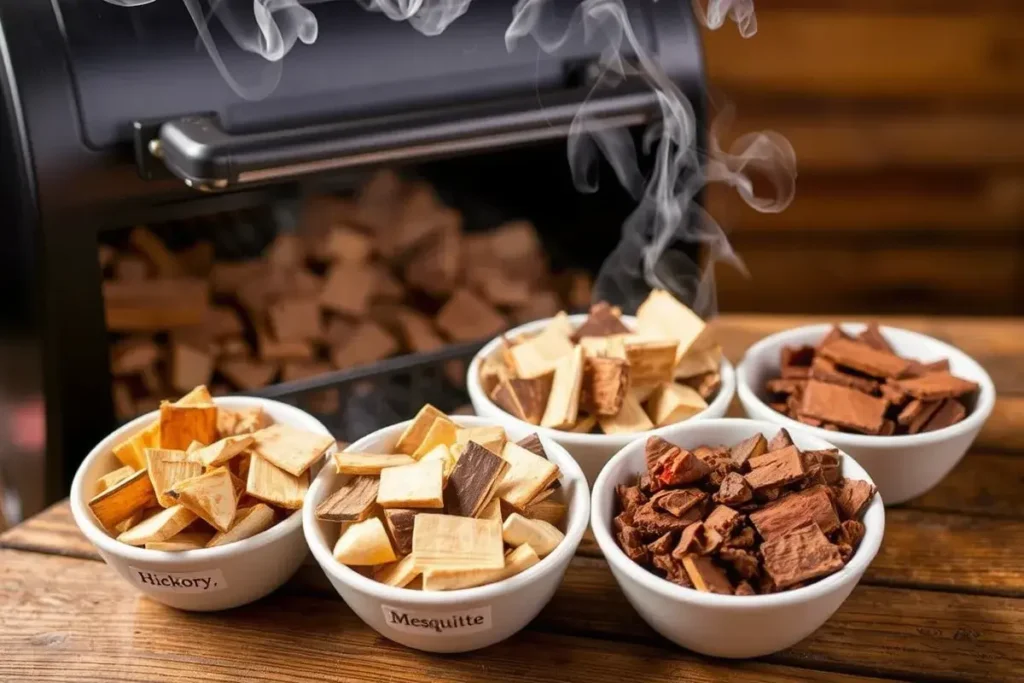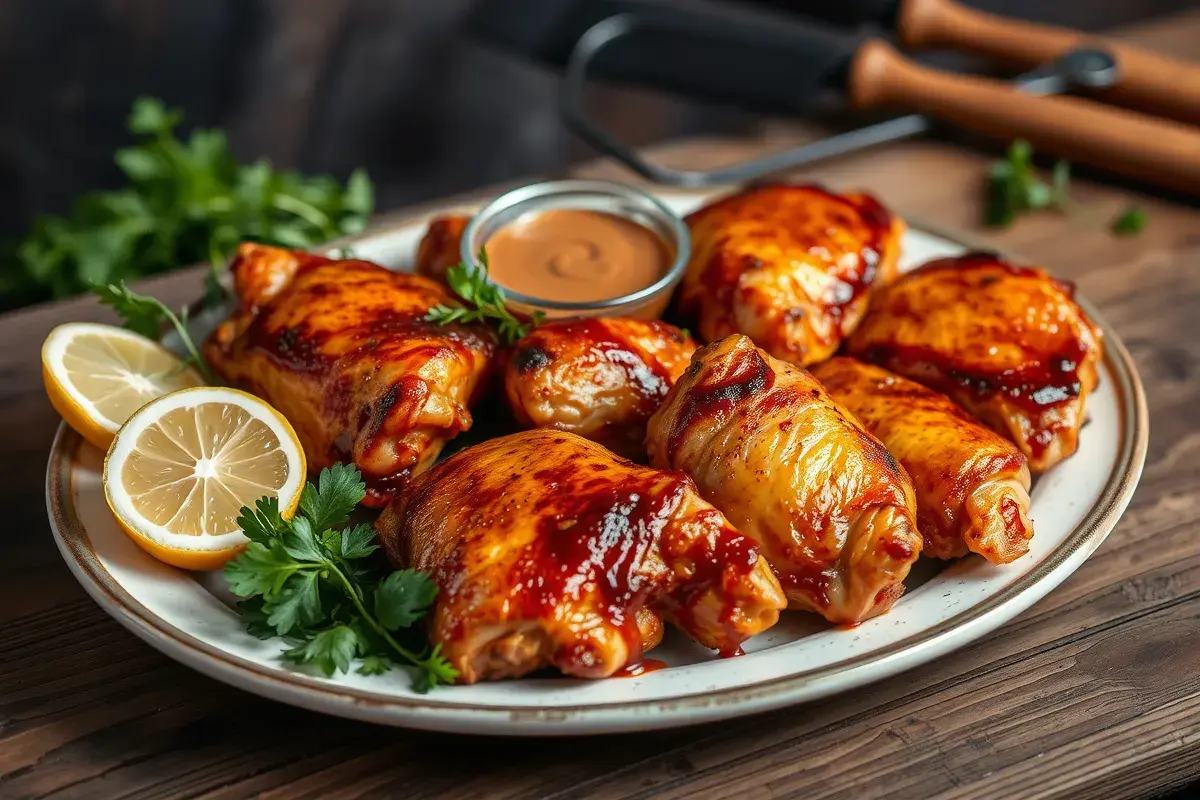Smoking chicken is a fantastic method that elevates the flavor of the meat. Many barbecue enthusiasts prefer smoked chicken thighs for their succulent texture and rich taste. This ultimate guide covers everything you need to know to make incredible smoked chicken thighs at home. Here, you’ll learn secrets to ensure your chicken stays moist, develops crispy skin, and is perfectly seasoned.
This method has gained popularity at backyard gatherings and even barbecue competitions. However, some home cooks might be unsure about creating professional-grade results. Luckily, with the right equipment, seasoning, and time management, it’s quite achievable.
You will discover how to marinate, how to apply dry rubs, and the best woods for smoking. Additionally, you will learn how to avoid rubbery skin and check the internal temperature. There is also advice on basting, which can increase flavor without drying the meat. Finally, learn how to pick perfect sauces and sides to pair with your smoked chicken thighs.
1. Why Smoke Chicken Thighs?
While many chicken cuts work well on the smoker, thighs are a favorite in barbecue. They have a higher fat content than chicken breasts, which results in a more tender and moist texture. They are also more forgiving than lean cuts during slow cooking.
Moreover, the dark meat in thighs provides a robust flavor. Thighs also absorb seasonings and smoke faster than some other parts of the chicken. This makes them perfect for beginners. Experienced pitmasters love their flexibility since thighs remain juicy even if the cooking time varies slightly.
Smoked chicken thighs can also be marinated or rubbed with a wide range of spices. You can keep it simple with salt and pepper, or you can explore different blends. However, be careful with extra salt if brining, since that could overpower the natural flavors.
2. Equipment and Tools
Having the right tools will help you succeed. Smoking chicken requires a consistent heat source, good ventilation, and a well-maintained smoker. Here are some popular types of smokers:
- Charcoal Smoker: This classic choice provides an authentic smoky taste. You can control the temperature using the airflow vents.
- Pellet Smoker: Convenient and automated, this kind uses wood pellets to feed a small fire pot. It offers consistent temperatures with very little effort.
- Electric Smoker: This is great for beginners because of its simple temperature control. However, it may produce a lighter smoke taste than wood or charcoal.
- Offset Smoker: Favored by barbecue fans, this smoker has a separate firebox. It uses indirect heat to pass through the cooking chamber.
Beyond the smoker, a few additional tools are necessary. A good meat thermometer is crucial. In addition, heat-resistant gloves make handling hot grates safer. Sturdy tongs, foil, and a water pan will be very helpful. A drip tray can catch fat and juices, which will make cleanup easier.
For additional resources, check out our sitemap to find related articles and guides. There, you may find posts comparing different smokers or discussing essential barbecue accessories.
3. Choosing the Right Chicken Thighs
Your journey to amazing smoked chicken thighs starts at the butcher’s counter. Look for bone-in, skin-on thighs. These have more flavor and hold up better to smoking. Boneless thighs will cook faster. However, they might not have the same juicy, meaty taste the bone provides.
Inspect the packaging, checking the sell-by date and color of the meat. Fresh thighs will be pinkish with moist skin. Avoid packages with an odd smell or excessive liquids.
Some brands offer “air-chilled” chicken, which means that the meat has less water. This helps with flavor absorption from marinades and rubs. Be careful of injected chicken that may contain saline solutions. This can affect how your seasonings react with the meat.
4. Seasoning and Preparation

Seasoning is essential for great-tasting smoked chicken thighs. You can begin with a dry rub, using a mix of spices and herbs. Common spices include paprika, garlic powder, onion powder, black pepper, and chili powder. A touch of sugar can caramelize the skin.
Marinating is another option if you want a wet approach. A marinade usually has oil, acid (like vinegar or lemon juice), and herbs or spices. Try to marinate for less than 24 hours. Going too long may break down the meat’s structure and make it mushy. Be sure to pat the thighs dry before smoking to help the skin crisp.
Some people like to brine their chicken, especially if it is not pre-injected with a salt solution. A basic brine usually has water, salt, sugar, and sometimes herbs. However, if you brine, adjust the salt in your rub later to avoid over-seasoning. Also, remember to keep brined or marinated chicken in the refrigerator for food safety.
4.1. Dry Rub Basics
- Salt: Helps flavors penetrate the meat.
- Brown Sugar: Provides sweetness and helps with forming a crust.
- Paprika: Adds color and a mild smoky flavor.
- Garlic Powder: Provides savory depth.
- Cayenne Pepper (optional): Offers a spicy kick.
4.2. Marinade Essentials
- Oil: Helps spread flavors.
- Acid: This could be vinegar, lemon juice, or even yogurt.
- Herbs/Spices: Salt, pepper, rosemary, or thyme.
- Extras: Soy sauce, Worcestershire sauce, or hot sauce for more zest.
5. Wood Selection for Smoking

The right wood will influence the final taste of your smoked chicken thighs. Some woods create a lighter smoke, while others give a bolder taste. Here are a few popular choices:
- Hickory: It has a robust, bacon-like smokiness. It pairs well with the richness of thighs.
- Apple: This adds a sweet, fruity note to poultry. It also creates a light smoke that is not overpowering.
- Cherry: This is similar to apple but with a more pronounced sweetness. It gives meat a deep mahogany color.
- Mesquite: It has an intense, earthy flavor. It can be too strong for chicken. However, a small amount can add a unique element.
- Pecan: This provides a nutty and mild smoke. It is stronger than fruitwood but lighter than hickory or mesquite.
Most smokers allow you to mix wood chips or chunks. You can experiment to find your favorite flavor balance. If you prefer a subtle taste, do not overdo it with stronger woods.
6. Time and Temperature Guidelines
Temperature control is essential in smoking. Many wonder about the ideal temperature for smoked chicken thighs. A common strategy is to set the smoker at 225°F (107°C). This lower temperature lets the meat soak up smoky flavors while staying tender.
Some pitmasters prefer to smoke at 250°F (121°C) to cook faster or help the skin render fat. This can create crispier skin in less time. You can choose based on your schedule and personal preference.
Cooking times will vary, but chicken thighs often take between 2 and 3 hours at 225°F. The exact time depends on the size of the thighs, the smoker’s consistency, and the weather. Always use an internal thermometer to check for doneness. The meat should be at least 165°F (74°C). Some prefer to go a bit higher for a better texture.
7. Step-by-Step Smoking Process
Here is a step-by-step guide to help you prepare and smoke your chicken thighs. These steps assume that you have a standard charcoal or pellet smoker:
- Light or Preheat Your Smoker
- If using charcoal, start a chimney of briquettes.
- If using a pellet smoker, set the temperature to your chosen setting.
- If using an electric smoker, preheat following the instructions.
- Prepare the Chicken Thighs
- Rinse the thighs under cold water and pat dry.
- Apply your chosen dry rub or marinade.
- Let them rest for about 30 minutes so that the flavors settle.
- Place Chicken on the Smoker
- Place the thighs on the grate with skin-side up.
- Leave space between them for even heat distribution.
- Place a water pan below, if possible, to help keep moisture levels consistent.
- Monitor Temperature
- Aim for 225°F if you want a slower cook.
- Use a meat thermometer to track internal temperature.
- Adjust vents or settings to maintain consistent heat.
- Baste (Optional)
- If you like more moisture or flavor, baste the chicken with herbs and butter.
- Some chefs prefer using barbecue sauce during the last 30 minutes.
- Do not baste too often, as it could disrupt cooking temperatures.
- Check Internal Temperature
- When the thighs reach around 160°F, consider flipping them to even out the cooking.
- Make sure to reach at least 165°F before removing from the heat.
- Some pitmasters go to 175°F for even more tenderness in dark meat.
- Rest and Serve
- Let the thighs rest for 5–10 minutes to lock in juices.
- Slice or serve whole with your favorite sides and sauces.
- If you like crispier skin, you can quickly sear over direct heat.
8. Tips for Crispy Skin
Sometimes, smoked chicken thighs end up with rubbery or chewy skin. Here are some ways to get crispy skin:
- Dry the Skin: Thoroughly pat the skin with paper towels before smoking. Moisture can hinder crispness.
- Increase Heat at the End: Crank the smoker to 300°F or sear on a hot grill. That final burst of heat can tighten the skin.
- Limit Basting: Too much liquid will prevent rendering. Baste only sparingly, especially during the last hour.
- Oil the Skin: A light coating of oil can help with browning.
- Ventilation: Keep the smoker vents open to reduce moisture.
Some people remove the skin if it will not crisp. That might remove some of the smoky flavor. Try these methods first for the best result.
9. Flavor-Boosting Ideas
Many people love adding extra flavor. Here are a few techniques you can experiment with:
- Compound Butter Under the Skin
- Mix soft butter with herbs and spices.
- Slide it under the skin for added richness and juiciness.
- Rubs with Unique Ingredients
- Use smoked paprika instead of standard paprika.
- Add a bit of cocoa powder for an earthy dimension.
- Use dried herbs such as oregano or thyme.
- Fruit-Infused Sprays
- Mix a bit of vinegar with apple juice.
- Spray the thighs about every 45 minutes for subtle sweetness.
- Honey Glaze
- Warm honey with a small amount of chili flakes.
- Brush it on during the last 15 minutes for a sweet and sticky finish.
- Smoked Salt
- Use smoked salt in your rub.
- This can enhance smokiness, particularly if you’re using a lighter wood.
Keep track of your favorite twists. Write them down and tweak them over time. Remember that subtlety is best, as overloading the chicken can mask its natural flavors.
10. Serving Suggestions
When you have perfected your smoked chicken thighs, it is time to present them. Here are some side dishes that pair well with smoky chicken:
- Classic Coleslaw: Creamy or vinegar-based slaw can cut through the richness of the meat.
- Baked Beans: Sweet and hearty, they are great with barbecue flavors.
- Grilled Vegetables: Peppers, corn, zucchini, and onions can be roasted at the same time on the grill.
- Cornbread: This sweet and crumbly bread soaks up the juices.
- Potato Salad: This cool, savory salad will complement the warmth of the chicken.
Also, try serving various dipping sauces with the meat. Barbecue sauce is standard, but you could try Alabama white sauce, a mustard-based sauce, or spicy chipotle mayo. Garnish the plate with fresh herbs or a slice of citrus.
11. Common Pitfalls to Avoid
Smoking can be forgiving. However, a few errors can affect your result:
- Too Much Smoke
- Over-smoking will create a bitter aftertaste.
- Use a small amount of wood at first, then add more if you need it.
- Improper Temperature Control
- If the smoker gets too hot, the chicken may dry out.
- If the temperature drops too low, you risk undercooking or rubbery skin.
- Opening the Lid Too Often
- Lifting the lid often releases heat and smoke.
- This will increase cooking time and may dry out the chicken.
- Ignoring Rest Time
- Slicing the chicken right away causes the juices to run out.
- A short rest period allows the juices to redistribute.
- Skipping the Thermometer
- Guessing the doneness can cause undercooked or overcooked chicken.
- For best accuracy, use an instant-read thermometer.
12. FAQ
12.1. How long do you smoke chicken thighs at 225 degrees?
Smoked chicken thighs at 225°F usually take about 2 to 3 hours. However, factors such as thigh size and outdoor temperature may have an impact. Make sure to use a meat thermometer to reach an internal temperature of at least 165°F.
12.2. Is it better to smoke a chicken at 225 or 250?
Both temperatures work well. If you prefer a slower cook with more smoke absorption, choose 225°F. If you prefer a faster cook and crispier skin, choose 250°F.
12.3. How to smoke chicken thighs without rubbery skin?
First, pat the skin dry. Then, maintain a consistent temperature. Try raising the heat to around 300°F for the last 15 minutes. This high temperature will crisp the skin. Also, try not to baste or sauce until the end to prevent trapping moisture in the skin.
12.4. Are chicken thighs done at 165?
Yes, chicken is safe to eat at 165°F. Some pitmasters cook thighs to 170°F or 175°F. They believe dark meat will stay juicy and become more tender at higher temperatures. Choose what you prefer, as long as you pass the 165°F mark.

